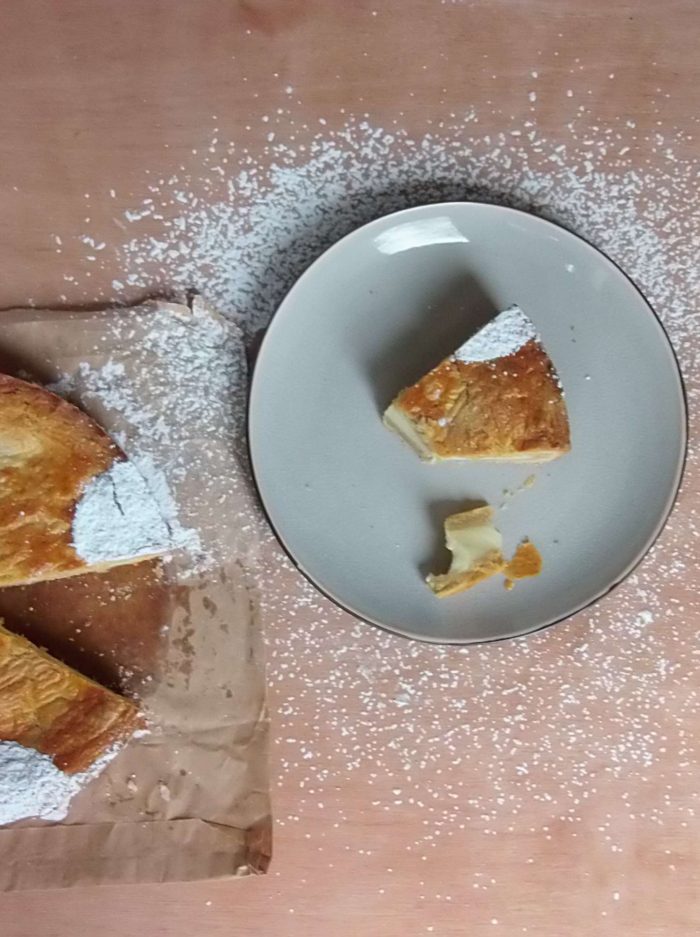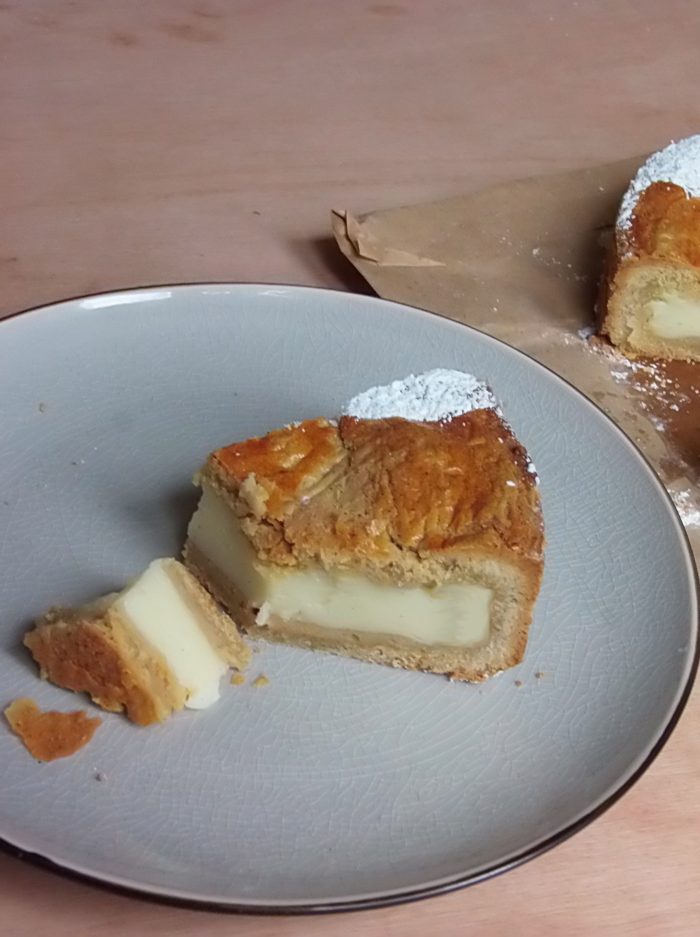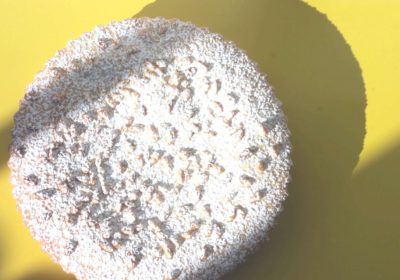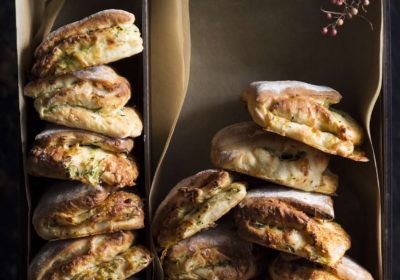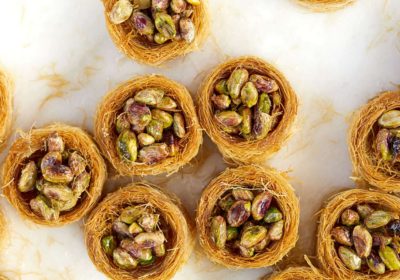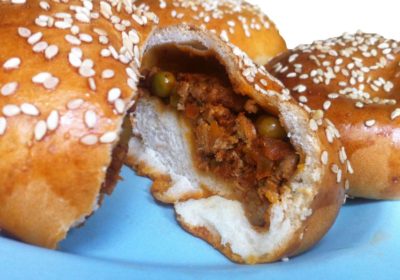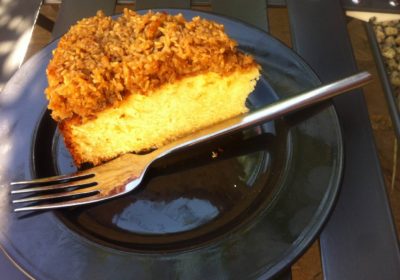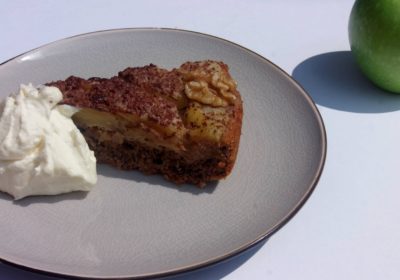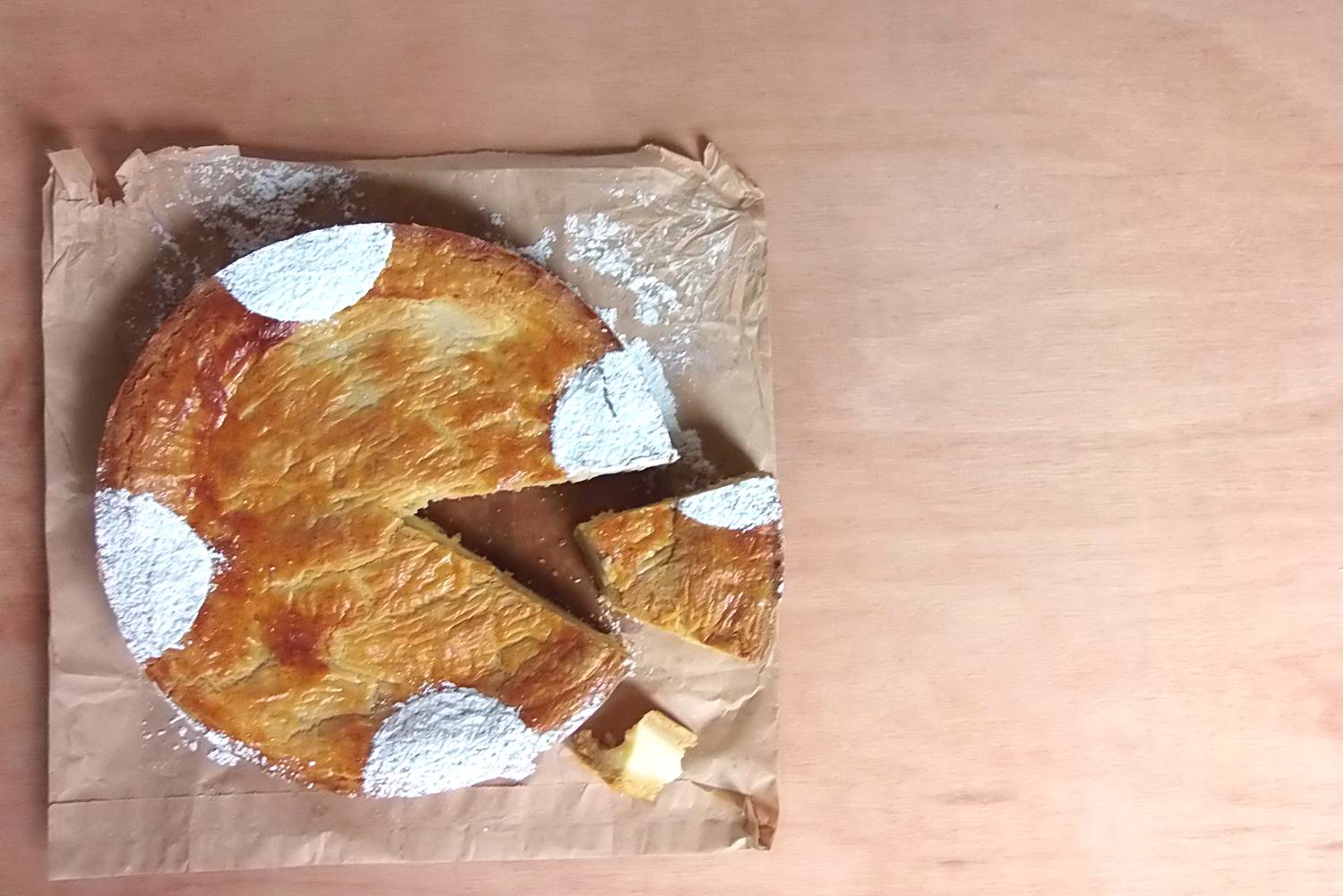
When you visit the resurgent, northern Spanish city of Bilbao you look for a few things. One is the Guggenheim gallery that has been largely, if not entirely credited with the rebirth of the industrial harbour city as a tourism magnet. Another is the concept of pinchos, the frequently mayonnaise-heavy bar-top snacks that match a cold beer or glass of Txakoli wine, but a visit has a huge hole in it without trying out its signature bakes. One of which is Pastel de Vasco, or Gateau Basque.
It’s not ubiquitous in the city, at least not quite as frequently spotted as the Pastel de arroz or the meringue tower of the Carolina, but it’s there if you look for it. The ones found at the city’s oldest and most famous bakery, Arrese, are found in handy pocket sizes, but it’s a classic tart that scales up nicely to become the centre-piece of a kitchen table for coffee or after a meal as dessert.
It’s not difficult to bake if pastry is something you’re comfortable with and can approach a crème pâtissière without sweating, or worse, over the possibility of your eggs splitting. One thing to know is that the separation between the creamy interior and the soft pastry doesn’t last, so for a clean cut, it’s best sliced into a couple of hours after baking, avoiding a soggy pastry – but, eat it whenever and it still tastes like a delicious slice of the authentic Bilbao. This recipe is for a cake pan of around 20cm.
Details
Ingredients
- 750g milk
- 180g sugar
- 135g egg yolks
- 70g corn flour
- 1 tsp vanilla extract
- 30g rum
- 280g plain flour
- 200g cold butter cut into cubes
- 100g sugar
- 100g brown sugar
- 1 egg
- 2g baking powder
- Zest of half a lemon
Preparation
- 1Pour the milk, 90g of sugar and the vanilla extract into a saucepan and warm over medium heat. While that comes up to temperature, mix the remaining 90g of sugar and the corn flour together in a mixing bowl, then beat the dry ingredients into the egg yolks, continuing until they become pale.
- 2The milk shouldn’t boil; remove the pan from the heat when signs of it simmering begin to show. Little by little and constantly whisking, pour the milk into the egg yolk mixture. Without constantly whisking the eggs will scramble.
- 3Return the mixture to the pan and, still whisking; heat it gently until it thickens. Once it reaches a consistency of very thick cream remove it from the heat, yet continuing to whisk for another minute or so before putting it into a bowl. Cover the surface of the crème pâtissière with cling film to avoid a skin forming. Once cooled, add the rum.
- 4To make the pastry, sift together the flour with the baking powder and two sugars. Cut in the cubes of butter and add the lemon zest. Either working quickly by hand or using a food processor/mixer, rub/combine the ingredients to form a breadcrumb texture.
- 5Beat the egg, add it to the dry mixture and combine until it’s possible to form a ball. If it’s dry, add a dash of milk. It should be possible to quickly combine the ingredients completely by kneading for around 30 seconds.
- 6Split the dough in two, taking around 40% for the top of the tart, with one share slightly larger for the base. Wrap the smaller ball in cling film or a wet towel-covered bowl and put it in the fridge.
- 7Work with the bigger mass of pastry to cover the cake pan, either by rolling or pressing the dough so it covers the base and side with 30mm - 1cm clear at the top. Prick it with a fork, put it in the fridge and take out the smaller mass of pastry.
- 8Roll or shape by hand the dough to a circle with a circumference that slightly exceeds that of the cake pan. If it isn’t perfect, it doesn’t matter as the excess can be trimmed, so bigger is better.
- 9Take the base from the fridge and fill it with the cooled crème pâtissière. Brush the top edge of the base sides with beaten egg to act as glue for the lid, then gentle place the lid over the tart. It may be easier to roll the lid up using a rolling pin and unroll it across the tart, depending on how wet the dough is. Press the lid to firm the join around the edges.
- 10Heat the oven to 170ºC, putting the tart back in the fridge while it comes up to temperature.
- 11Brush the tart with beaten egg and then bake for approximately 45 minutes, or until the entire tart is a deep, golden brown. Decorate with icing sugar if desired and serve after cooling.


